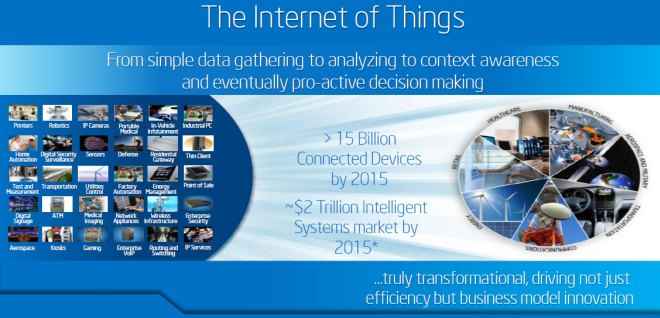Intel roadmap for 2014: 2-in-1s, Baytrail-powered devices, wearables and more

Intel expects full steam ahead into the tablet and 2-in-1 space in 2014.
Intel sees a huge potential in the 2-in-1 devices in the near future. Even as the company will have processors for tablets and smartphones, the main focus will be on two-in-one devices. Intel also has huge plans for its Baytrail processor as it reveals its OEM partners will be launching devices based on the new architecture.
Focus on 2-in-1 devices
Intel believes possible price cuts in the next year is expected to boost the adoption of the 2-in-1 devices. With more OEMs expanding their 2-in-1 line up, prices may ome down to sub-Rs 30,000 “This year, we expect prices to come down a little, which would drive the adoption further,” Aurora said.
“In 2013, we saw a lot of OEMs ( original equipment manufacturers) coming out with 2-in-1 devices, which could be used both as a PC and tablet. They called it swivel, hybrids and some other names too,” Sandeep Aurora, director, marketing and market development, Intel South Asia, is quoted as saying.
Intel has also shared its predictions and roadmap for various segments in 2014:
Education
Intel predicts that within the next three to five years, India will see a huge increase in device ownership with one device for every student increasingly being the norm. The key challenge will be providing the students, particularly in regional areas with the right education, devices and services to engage them.
New range of devices
In 2014, consumers can choose from a range of devices including traditional laptops, 2-in-1s, tablets and portable all-in-ones (AIOs) with Intel Inside, across varying price points to fit every budget.
“We will continue to move full steam ahead into the tablet and 2-in-1 space. “Touch it, type on it, or talk to it – these devices are multitasking powerhouses that will offer us new interaction possibilities” says Sandeep Aurora, talking about what consumers can expect in 2014.
Intel Quark technology
Intel believes its Quark technology will help extend the company’s reach wearable computing in the future. With Intel Quark technologies, Intel is extending the flexibility and scalability of the x 86 ecosystems. This trend is being driven by increasingly connected devices, seamless connectivity from sensors to the datacentre, cloud economics for compute and data and the acceleration of big data analytics to extract value from data.
Data
Intel says having 15 billion connected devices in the next few years is achievable. The biggest question is around where the data will go when these devices connect and the best way to make use of that information. This will prompt a whole industry to grow around predictive analysis and raw data. Big Data will help make companies smarter, more progressive and give them a business advantage. Governments will soon follow.
Source: Times of India





